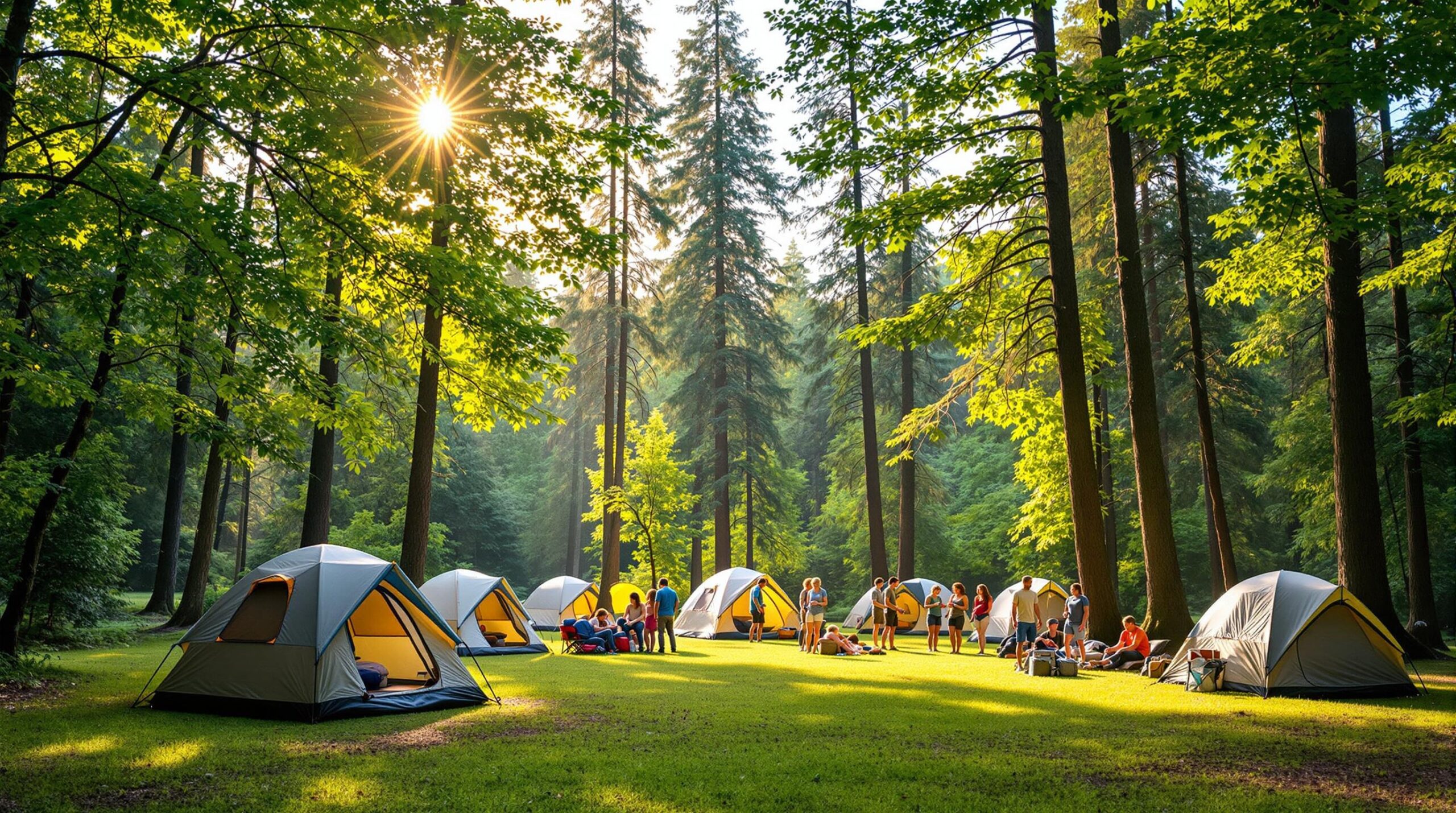Pennsylvania’s state parks and forests are seeing a 30% year-over-year surge in camping reservations for the upcoming summer season. One summary attributes the heightened demand in part to travelers’ renewed interest in easily accessible outdoor spaces.
As of late last month, 24% of campsites throughout the state’s 124 parks had already been booked, and the report adds that federal staffing cuts impacted hundreds nationwide, including some sites in Pennsylvania. The account indicates that the resulting service reductions at certain national parks have further channeled visitors toward state-run facilities.
At Trough Creek State Park in Huntingdon County, the increase is especially notable, showing a 189% rise in bookings over the same period last year. Official data also preserves remarks from DCNR Secretary Cindy Adams Dunn, who said, “Pennsylvanians and visitors alike are embracing the outdoors like never before. With increased demand for camping, we encourage everyone to plan ahead and take advantage of the many beautiful sites still available.”
Large water-oriented destinations, including several reservoir-based parks, are among the most popular choices for summer adventurers. Officials have noted that many lakefront campgrounds experience their highest volume during weekends, spurring campers to reserve spots more quickly this year.
Despite brisk booking levels, opportunities remain for those open to exploring lesser-known parks or scheduling mid-week vacations. Planning experts suggest that flexible dates and an eye toward smaller facilities can help visitors secure a scenic retreat without contending with substantial crowds.
Admission to Pennsylvania’s state parks is available at no cost. The system has historically chosen to waive entrance fees, allowing more people to enjoy recreation areas even when onsite amenities fill to capacity.
Some managers address the uptick with dynamic staffing plans, ensuring that employees can shift seamlessly between guest services, retail duties and maintenance jobs. This approach helps maintain continuous oversight and visitor assistance during periods of peak operation.
Meanwhile, campground operators often rely on robust online booking systems that provide real-time availability. By clearly displaying open sites and reservation windows, these platforms give travelers a straightforward way to compare options and secure a preferred date or park.
Physical improvements to busy locations can also alleviate congestion, such as adding more RV hookups and enhancing group spaces. Such upgrades not only accommodate higher volumes but also promote a more comfortable experience for seasoned campers and newcomers alike.
Proactive messaging about alternative dates and destinations similarly eases strain on the most sought-after parks. Highlighting mid-week discounts or encouraging day trips in adjacent forests can prevent the sense of overcrowding, particularly at marquee campgrounds.
Marketing and guest engagement bolster these measures by helping properties stand out in a highly competitive market. Seasonal promotions, loyalty incentives, and distinct add-on experiences—like guided hikes or specialized workshops—add to the attraction of a particular location, often encouraging return visits for future excursions.
As demand for outdoor travel continues to climb, Pennsylvania remains committed to preserving the welcoming character of its parks and forests while managing capacity responsibly. Observers note that, with thorough planning and thoughtful upgrades, the current upswing in reservations can sustain a robust culture of exploration for years to come.


